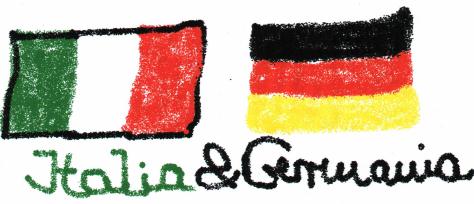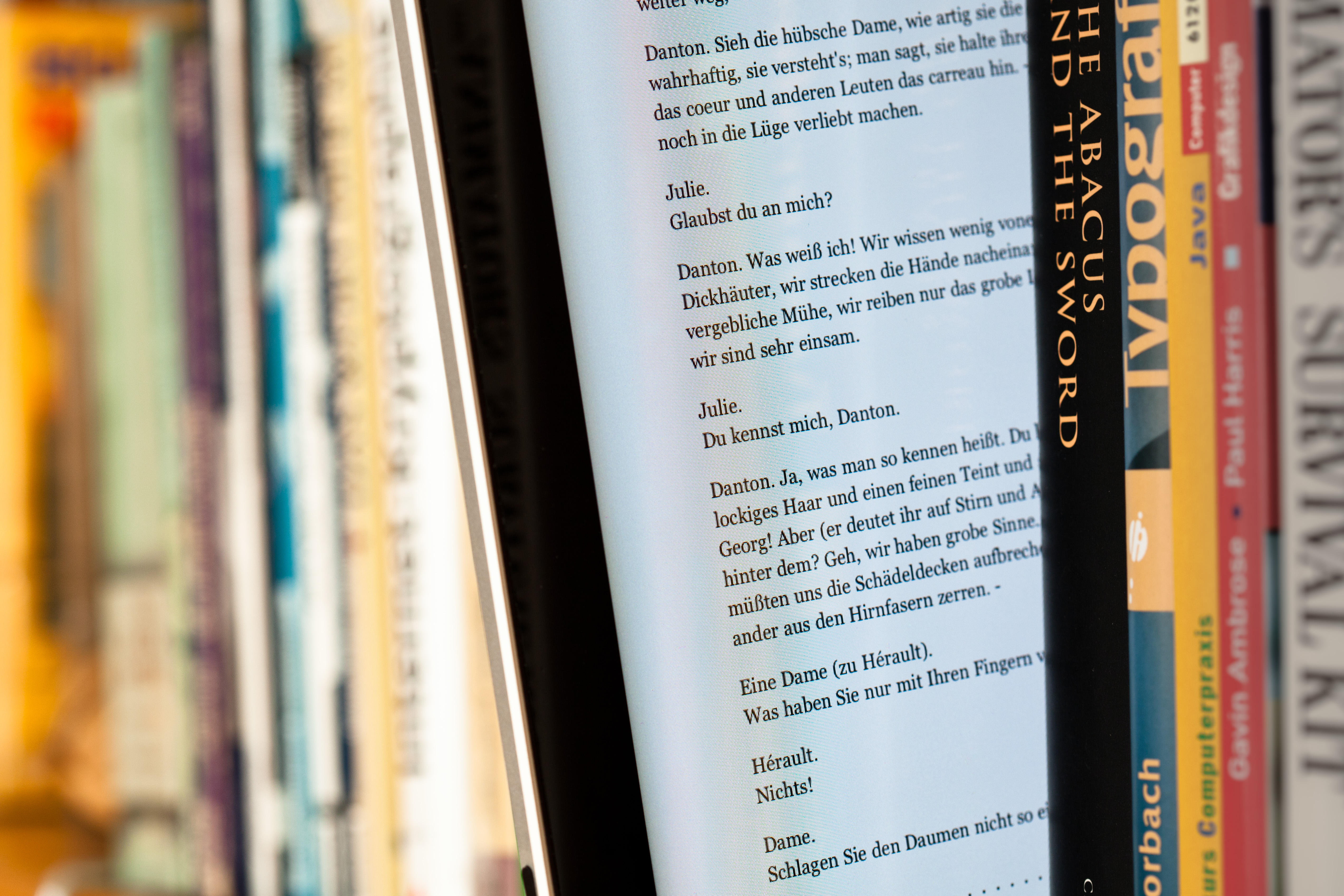Bodybuilder silhouette is geen merk

Gerecht EU 29 september 2016, IEF 16287; IEFbe 1944; ECLI:EU:T:2016:579 (Universal Protein Supplements) EU-merk. De aanvraag voor registratie van beeldmerk dat een bodybuilder voorstelt voor voedingssupplementen is beschrijvend voor de producten en diensten waarvoor inschrijving is gevraagd. Het silhouette is een realistische weergave van hoe een bodybuilder in pose zijn armspieren toont. Het Gerecht EU weigert de voorziening.
Vragen aan HvJ EU: mogen verduidelijkende aanvullingen als tofuboter, sojamelk ondanks verkoopbenamingseisen?

Prejudiciële vragen gesteld aan HvJ EU 28 juli 2016, IEF 16282; IEFbe 1943; LS&R 1375; RB 2779; C-422/16 (TofuTown) Merknamen. Verkoopbenaming. Verzoekster is een vennootschap die vegetarische/vegane levensmiddelen produceert en distribueert onder benamingen als Tofubutter, pflanzenkäse, veggie-cheese e.d.. Verweerster is het Verband Sozialer Wettbewerb, een vereniging tot bestrijding van oneerlijke mededinging. Verweerster heeft een stakingsvordering tegen verzoekster ingesteld wegens schending van de DUI mededingingswet in samenhang met bijlage VII van Vo. 1308/2013. Het gaat om de benaming van de betreffende producten.
Vraag aan HvJ EU: Kunnen opgeschreven gegevens in antwoorden bij beroepsexamen persoonsgegevens zijn?

Prejudicieel gestelde vragen aan HvJ EU 29 juli 2016; IT 2140; IEFbe 1942; C-434/16 (X tegen Data Protection Commissioner) Verzoeker volgt een opleiding voor accountant bij het Institute of Chartered Accountants of Ireland (CAI). Dit verloopt voorspoedig, behalve een (‘open boek’-)examen Strategic Finance and Management Accounting (SFMA) waarvoor hij vier maal zakt. Na die vierde keer (najaar 2009) probeert hij de uitslag aan te vechten maar besluit dan (mei 2010) om een verzoek tot inzage in (al) zijn gegevens in te dienen op grond van de IER (persoons)gegevensbeschermingswetten.
Het CAI geeft stukken vrij maar niet zijn schriftelijk examenwerk omdat dit niet onder het begrip ‘persoonsgegevens’ in de zin van de IER wet valt. Verzoeker neemt dan contact op met de IERaut persoonsgegevens (DPC, verweerster) met verzoek om bijstand, maar ook die geeft verzoeker in juni 2010 te kennen dat wat gegevensbescherming betreft in het algemeen geen rekening wordt gehouden met schriftelijk examenwerk omdat het daarbij doorgaans niet om persoonsgegevens gaat. Op 01-07-2010 dient verzoeker bij DPC een formele klacht in. DPC geeft aan dat, omdat geen sprake is van een wezenlijke schending van de wet er geen reden is om de klacht te onderzoeken. De antwoorden in het ‘open boek’-examen SFMA bevatten naar verwachting geen persoonlijke informatie over verzoeker of enige andere examenkandidaat.
Vragen aan HvJ EU over autovelgen die als vervangingsonderdelen ter reparatie dienen

Prejudiciële vragen gesteld aan HvJ EU 2 juni 2016; IEF 16281; IEFbe 1941; C-435/16 (Acacia tegen Porsche) Verzoeksters (d’Amato is bestuurder van Acacia) vervaardigen velgen voor personenauto’s, waaronder imitaties van ingeschreven gemeenschapsmodellen van verweerster Porsche. Op de velgen staan de kenmerken van verzoekster. Zij biedt de velgen in DUI aan via haar website waarbij zij erop wijst dat het om vervangende wielen gaat die volledig compatibel zijn met de aangegeven voertuigen en uitsluitend bestemd om ze te repareren en weer hun oorspronkelijke uiterlijke kenmerken te geven. Verweerster stelt inbreuk op haar gemeenschapsmodellen. Verzoeksters zijn in eerste instantie veroordeeld maar gaan in beroep, dat eveneens wordt verworpen. De zaak ligt nu voor in Revision bij de verwijzende rechter. Verzoeksters volharden in hun stelling dat het om vervangingsonderdelen gaat die dienen ter reparatie van beschadigde voertuigen en daarom krachtens artikel 110 van Vo. 6/2002 niet vielen onder de bescherming van de litigieuze modellen. Zie ook de andere twee recente Acacia-zaken C-397/16 [IEF 16224] en –zijdelings- C-433/16 BMW [IEF 16280]
Vraag aan HvJ EU: Is opwerpen van onbevoegdheidsexceptie van aangezochte nationale rechter, maar ondergeschikt aan andere prejudiciële procedure-excepties, aanvaarding rechtsmacht?

Prejudiciële vragen gesteld aan HvJ EU 5 april 2016, IEF 16280; IEFbe 1940; C-433/16 (BMW tegen Acacia) Procesrecht. Rechtsmacht. Acacia heeft verzoekster gedagvaard (Rb Napels) ter verkrijging van een uitspraak tot vaststelling van niet-inbreuk op gemeenschapsmodellen van allooivelgen voor autobanden, in eigendom of onder octrooi van verzoekster. Zij vordert dat vragen aan het HvJEU worden gesteld voor wat betreft de bevoegdheid van de ITA rechter. Verzoekster heeft (onder meer) de onbevoegdheid van de ITA rechter als exceptie opgeworpen, zich baserend op zowel Vo. 44/2001 als Vo. 6/2002, die beide de DUI rechtbanken als bevoegd aanwijzen. Voor wat betreft het verwijt van misbruik van machtspositie stelt zij dat ‘de plaats waar het schadebrengende feit zich heeft voorgedaan’ niet dezelfde is en niet dezelfde kan zijn als die waar de uiteindelijke economische schade aan het vermogen van de beweerde schadelijder zich heeft voorgedaan, aangezien aldus het forum van artikel 5, lid 3, van de Vo. Brussel I zou samenvallen met het forum actoris, hetgeen in strijd is met het algemeen criterium van de woonplaats van verweerder. Zij wijst op het feit dat verweerster geen enkele vordering tot schadevergoeding tegen haar heeft ingediend zodat de plaats van de schade zich niet in ITA kan bevinden. Zie ook de andere twee recente Acacia-zaken C-397/16 [IEF 16224] en –zijdelings- C-435/16 [IEF 16281].
(1) Kan volgens artikel 24 van verordening nr. 44/2001 het vooraf opwerpen van de exceptie van onbevoegdheid van de aangezochte nationale rechter, maar ondergeschikt aan andere prejudiciële procedure-excepties, voordat wordt ingegaan op de grond van de zaak, worden uitgelegd als een aanvaarding van de rechtsbevoegdheid?
Gerecht EU: Klankteken dat lijkt op een belsignaal kan geen identificatiefunctie vervullen

Gerecht EU 13 september 2016, IEF 16275; IEFbe 1939; ECLI:EU:T:2016:468; T-408/15 (Globo tegen EUIPO) Aanvraag voor klankmerk. Absolute weigeringsgrond: geen onderscheidend vermogen. Motiveringsplicht. Klanken kunnen een merk vormen, op voorwaarde dat zij bovendien vatbaar zijn voor grafische voorstelling. De banaliteit van het teken voor waren en diensten die al dan niet kunnen worden geassocieerd met beltonen van telefoons of geluidssignalen van wekkers en het feit dat het gebruik van een klankmerk voor stille waren moeilijk voorstelbaar is.
Een klankteken dat buitengewoon eenvoudig is en zich beperkt tot louter de herhaling van twee identieke noten, op zich geen boodschap kan doorgeven die de consumenten zich kunnen herinneren, zodat deze het niet zullen beschouwen als een merk, tenzij het door gebruik onderscheidend vermogen heeft verkregen. Een merk dat bestaat uit klanken die lijken op een belsignaal kan geen identificatiefunctie vervullen, tenzij het elementen bevat die het kunnen individualiseren ten opzichte van andere klankmerken, waarbij evenwel zij aangetekend dat het niet om een origineel of fantasiemerk moet gaan. Beroep wordt verworpen.
EHRM: Uitspraak om excuses te publiceren in strijd met 10 EVRM
EHRM 5 juli 2016 ; IEF 16271; IEFbe 1938; appl.no. 26115/10 (Kurski tegen Polen)
Artikel 10 EVRM. Verzoeker heeft beroep ingesteld tegen een rechterlijke uitspraak waarbij hem is opgelegd excuses te publiceren naar aanleiding van uitspraken die hij gedaan had in een live televisieprogramma over de uitgever van een krant. Het Hof oordeelt dat artikel 10 EVRM geschonden is.
Conclusie AG: Geldigheid van btw-richtlijn die verschillende tarieven e-books en fysieke dragers bepaalt

Conclusie AG HvJ EU 8 september 2016, IEF 16268; IEFbe 1937; IT 2139; C-390/15; ECLI:EU:C:2016:664 (Rzecznika Praw Obywatelskich RPO) BTW. Verschillende behandeling van publicaties op papier en andere fysieke dragers die tegen verlaagd btw-tarief kunnen worden verkocht ten opzichte van elektronische publicaties, zoals e-Books. Conclusie AG: Bij het onderzoek van de prejudiciële vragen is niet gebleken van feiten of omstandigheden die afbreuk zouden kunnen doen aan de geldigheid van punt 6 van bijlage III bij [BTW-richtlijn].
i-DEPOT vernieuwd

En français ci-dessous. Eerder werd het online indienen van opposities ter beschikking gesteld, werd de MyBOIP-omgeving vernieuwd en is het nu ook mogelijk om een modelregistratie online te verlengen. Vandaag wordt een verbeterde versie van het i-DEPOT gelanceerd. Hiermee is het mogelijk om naast merken en modellen, ook i-DEPOTs voor klanten in te dienen. Wist u dat het i-DEPOT bewijs officieel bekrachtigd is in het BVIE, artikel 4.4bis? En, wist u dat het bewijsmiddel (het certificaat) aan de Europese richtlijn inzake de elektronische handtekening voldoet en dus door de rechters in Europa aanvaard wordt?
Interpretatief advies over de panoramavrijheid in het auteursrecht

FARO. Interpretatief advies, door: Joris Deene 'De panoramavrijheid in het auteursrecht', 23 augustus 2016.
Sinds 15 juli 2016 is in het Belgische auteursrecht een nieuwe uitzondering van kracht, de zogenaamde panoramavrijheid. Deze uitzondering werd ingevoerd middels de wet van 27 juni 2016 tot wijziging van het wetboek van economisch recht met het oog op de invoering van de panoramavrijheid. (...Lees het complete advies...) Conclusie: Ondanks het feit dat het auteursrecht vandaag de dag wel andere prioriteiten kent waarvoor hervormingen noodzakelijk zijn, is het in elk geval geen slechte zaak dat de panoramavrijheid in België vaste voet gevonden heeft. Wel zijn bepaalde voorwaarden van deze uitzondering voor interpretatie vatbaar, zodat enige onduidelijkheid blijft.
Archieven, bibliotheken en musea kunnen voortaan onder deze uitzondering foto’s op hun website gebruiken van werken geplaatst op openbare plaatsen, mits respect van de hier boven opgesomde voorwaarden. Zij dienen zich in ieder geval te onthouden van commerciële exploitatie van deze werken, aangezien dit de normale exploitatie van het werk in het gedrang zou kunnen brengen.
























